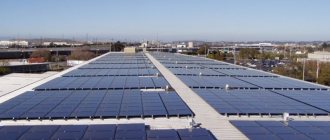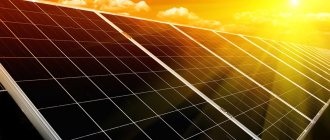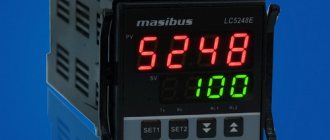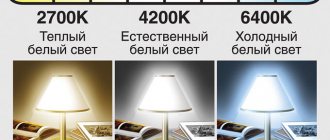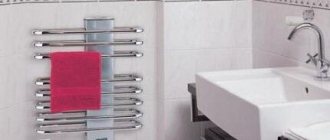Updated: 02/16/2021 17:56:54
Expert: Andrey Nikolaevich Kuznetsov
*Review of the best according to the editors of expertology.ru. About the selection criteria. This material is subjective in nature, does not constitute advertising and does not serve as a purchase guide. Before purchasing, consultation with a specialist is required.
Residents of our country are increasingly interested in alternative ways of generating electricity. One of the most promising areas is converting solar energy into electricity. Scientists have achieved serious progress in this regard thanks to the production of semiconductor wafers. Today, there are more and more manufacturers of solar modules, and prices for their products are invariably falling. Along with large stationary panels, mobile portable batteries are offered to customers. Therefore, the choice becomes more difficult; recommendations from our experts will help you find the most effective current source.
The principle of operation of a solar battery
Any solar battery is a photoelectric converter that uses light to produce electrical energy. The photoelectric effect in semiconductor materials is currently of practical value.
The effect is based on the appearance of free electric charge carriers in inhomogeneous semiconductor structures when exposed to light photons. It is observed in various semiconductors - based on silicon, gallium arsenide, cadmium telluride, and large polymer molecules.
Due to the appearance of free carriers, the energy of which is not enough to overcome the band gap, a potential difference (voltage) is formed between the electrodes of the element. When external circuits are connected, an electric current arises between them.
Scheme of solar panels operation
Photocells based on various semiconductors convert different parts of the solar spectrum into electrical energy. Thus, crystalline silicon modules capture up to 80% of radiation with a red shift, film elements based on amorphous silicon can also operate in the infrared range, titanium dioxide absorbs violet and ultraviolet rays.
Expert opinion
Grebnev Vadim Savelievich
Heating system installer
Theoretically, part of the absorbed solar radiation can be converted into electrical energy, but in practice it has so far been possible to achieve a conversion efficiency of about 15-25% for mass-produced elements.
In some laboratory samples, the researchers came close to the 50% mark. If the same results are obtained in industrial production, the cost of generation can be reduced by more than half compared to the current level.
Types of photocells
Solar batteries are classified according to several criteria:
- power;
- design and structure;
- photoelectric converter material.
The power of solar cells depends on their area and design features. The industry produces a large number of models: from miniature ones (for example, for portable electronics) to large-sized options (for buildings, power plants).
Structurally, modules can be:
- flexible;
- tough.
The use of thin-film flexible models allows you to level out some unevenness of the mounting surface. In this regard, they are more universal. But flexible panels are more expensive than their rigid counterparts.
The structure of the panels can be two-layer or multi-layer. The efficiency of the latter reaches 32%, which makes them the most effective option today.
PV cells based on the material of the photovoltaic layer can be:
- silicon;
- organic;
- tellurium-cadmium;
- gallium arsenide;
- polymer.
This is by no means a complete list. New materials are constantly appearing.
Types of solar panels
The main feature of the classification of solar modules is the semiconductor materials used in their manufacture. Today, more than 80% is occupied by silicon-based solar panels. It is these types that have received the widest possible commercial use and are offered by the vast majority of sellers in the industry.
In turn, silicon solar panels are divided into:
Types of silicon solar panels
Criterias of choice
The only criterion when designing a home power plant and choosing equipment for it should be feasibility.
However, this concept is broad; understanding it will require taking into account many factors:
- Average and maximum power consumption.
- Performance of solar modules.
- Availability of a stationary electrical network and mode of operation together with it.
- Geographical location of the area and climatic conditions.
- Financial capabilities of the home owner.
Monocrystalline silicon solar cells
Monocrystalline solar cells are electrically connected cells made from thin (240 micron) wafers of single crystal silicon. The optical axes are oriented in one direction, and a material of high purity (more than 99.99%) is used. This ensures maximum conversion efficiency. With a theoretically possible efficiency of 30% for a silicon element, in serial samples the figure reaches 18-24%.
Externally, monocrystalline batteries are easy to distinguish - they have a deep black color; during the cutting process, the element is given the shape of a regular square (rectangle) with cut corners.
The production technology of such solar cells holds the record for cost among silicon elements. The high production price is explained by the complex processes of purifying raw materials, growing a single crystal and cutting it precisely.
As a result, monocrystalline batteries have the highest price - about 0.9-1.1 dollars per 1 W of power.
Such elements also have another serious drawback - due to the precise orientation of the optical axes of the crystals, optimal returns can only be obtained when the sun's rays fall perpendicular to the plane of the element. With a significant change in the illumination angle, as well as in scattered light, a sharp decrease in generation is observed.
Content
- Principle of operation
- Advantages and disadvantages
- Kinds
- Rating of the TOP 7 best manufacturers of solar panels E-Power 25W
- SilaSolar 30W
- E-Power 50W
- TopRaySolar 65P
- TSM-95 A
- FSM-160P
- Seraphim SRP-270-6PB
- Portable – Goal Zero Nomad 7 Plus
Polycrystalline silicon cells
Polycrystalline silicon cells
In polycrystalline batteries, the cell includes many crystals with randomly oriented optical axes. Their production does not require highly purified raw materials - secondary sources (in particular, recycled silicon batteries) and waste from metallurgical production can be used.
As a result, manufacturing costs are significantly reduced. However, this also reduces the conversion efficiency - the best samples demonstrate an efficiency of 15-18%.
Expert opinion
Grebnev Vadim Savelievich
Heating system installer
Such indicators have made it possible to squeeze out monocrystalline panels on the market. Currently, polycrystalline batteries account for more than 53% of silicon battery sales, versus just over 30% for monocrystalline batteries.
Externally, polycrystalline plates are regular-shaped rectangular plates of a rich blue color. The cost of generating “blue” panels is about 0.7-0.9: per 1 W. However, they show significantly less reduction in diffuse lighting and light incidence at angles other than 90 degrees.
Comparison of the presented models
Let's look at the characteristics of the presented models in the table below.
| Model | Type | Voltage (V) | Rated power (W) | Service life (years) | Price, rub) |
| Delta SM - 150-12P | silicon polycrystalline | 12 | 150 | 10 | from 5950 from 7580 |
| Delta SM 200 - 12P | silicon polycrystalline | 12 | 200 | 10 | from 8600 to 10980 |
| Exmork FSM – 100P | silicon polycrystalline | 12 | 100 | 10 | from 4000 to 8600 |
| TOPRAY 100 watt 12V | silicon monocrystalline | 12 | 100 | 20 | from 9960 to 11560 |
| Feron PS 0303 150W | film | 17,6 | 150 | 3 | from 18700 to 19770 |
Amorphous silicon batteries
They are made from amorphous (non-crystalline) silicon a-Si by depositing silicon hydride vapor onto a flexible substrate. As a result, a stable photoelectric effect can be achieved even with a film thickness of several microns.
The technological process is significantly reduced in cost due to the minimum amount of required silicon raw materials, reduced requirements for its purity, and the absence of complex operations such as crystal growing and cutting.
The conversion efficiency is about 8-11%, the cost of generation is in the range of 0.5-0.7% per 1 W. The main disadvantage of such batteries is their low conversion efficiency, which requires a significant area to provide the required power. However, it is more than compensated by the possibility of installation on any surface - the flexible substrate does not require flat bases or special structures for installation.
In addition, modern polymorphic modules can operate in the infrared range, which significantly reduces efficiency losses due to diffuse lighting. As a result, amorphous elements today account for about 10% of the global market.
Accommodation options
There are several basic options for placing sets of solar panels for the garden and at home, each of which is selected depending on a number of circumstances.
- On land - if you have a personal or rented plot of sufficient area. Advantages - optimal placement of a large number of batteries with the potential to change their direction towards the sun.
- On the roofs of buildings - used mainly in conditions of dense buildings and the absence of a suitable site for convenient placement. The main advantage is space saving and a minimum number of cable lines.
- On the water – used when there is accessible water space. The main advantage is the increase in the average efficiency of the installations due to the natural cooling of the panels.
- Mobile – for small kits used for charging vehicle batteries, on long hiking trips, etc. The advantage is that it is not tied to a location due to its small dimensions and weight.
If solar power plants for a home are placed on high roofs with a large angle of inclination, the cost of the kit will increase slightly due to the difficulty of performing work at height.
Thin Film CdTe Batteries
Thin Film CdTe Batteries
Solar cells based on cadmium telluride (CdTe) can become a viable alternative to silicon cells. They currently demonstrate conversion efficiencies that are on average 20% higher than comparable amorphous silicon at a cost that is 20% lower. This is achieved due to the unique characteristics of the semiconductor, providing an optimal band gap.
Such panels are made by depositing a layer of semiconductor material on thin films. The technology is still available to a limited number of manufacturers, but serial production of such batteries has already been launched by the American company First Solar.
Popular manufacturers
To ensure that the system works for a long time, and the indicators from the technical documentation do not differ from real ones, it is worth choosing products from trusted manufacturers. You should not skimp on quality; this is unacceptable when purchasing solar panels. The best options for today are:
- LG Energy . He has been developing panels for about 30 years and producing them on an industrial scale for 11 years. The plant is located in South Korea, the batteries have a 25-year warranty and belong to the middle and high price segments. Premium products are popular in North America and Europe.
- SunPower. An American company that produces long-life solar panels. Over 25 years, the capacity of the panels decreases by only 8%. The products are expensive, but are considered among the most durable on the market.
- REC Group. A Norwegian company with production in Singapore produces reliable panels and provides a 20-year warranty, and the capacity drops slowly, so the service life is much longer than the warranty. There are options from the middle and expensive categories.
- Panasonic. Another famous brand. Solar batteries from this manufacturer have a 25-year warranty, are of high quality and have a long service life. The products are well suited for use in mid-latitudes and have an efficiency of 18-20%.
- Jinko Solar. A Chinese company that sells products all over the world and is considered one of the best in the inexpensive price segment. The products have a 25-30 year guarantee, the products are of high quality, despite the low price. There are options for both budget and middle class.
- Trina Solar. Another Chinese brand that offers cheap panels with good performance, but the warranty here is much shorter - 10 years, during which period the capacity drops by about 10%. Many experts consider this option to be optimal in terms of price and quality ratio.
- Longi Solar. A company from China that recently entered the global market, but has been selling inexpensive solar panels within the country for a long time. Single crystals are used in production, which ensures good performance even at low temperatures and poor lighting. Efficiency ranges from 18 to 20%.
SunPower is one of the longest lasting batteries available.
Polymer solar panels
In polymer solar modules, the photoelectric effect is provided by a layer of “polymer semiconductor” - large molecules of organic compounds. Currently, the technology of such products is close to the deployment of large-scale production (some European companies have already established commercial production).
Polymer solar panels
The conversion efficiency of such devices is estimated to be in the range of 8-11%. Due to record-breaking low-cost production, the use of flexible polymer materials, and the absence of disposal problems, in the near future polymer solar modules will be able to seriously compete with existing products.
Manufacturers are also actively developing solar panels based on:
- gallium arsenide, copper indium gallium selenide (CGIS);
- hybrid technologies, in which several semiconductor elements on different bases operate in different parts of the solar spectrum;
- photosensitized cells, with Gretzel flasks as a working element;
- nanoantennas in which sunlight as electromagnetic radiation induces EMF, etc.
Expert opinion
Grebnev Vadim Savelievich
Heating system installer
Many of them demonstrate conversion efficiency higher than modern serial panels (for example, semiconductors have come close to the 50% mark, and the efficiency of nanoantennas is estimated above 80%), but so far these options are at the level of laboratory samples and cannot interest a real user.
A few words about domestic brands
We have named only 10 well-known manufacturers, popular in different countries and regions of the world. The needs of domestic solar energy are mainly covered by imports. But as solar energy develops everywhere, local manufacturers are also emerging. There are not many enterprises that produce solar panels in Ukraine. This process is slow, since the production of photomodules is knowledge-intensive and expensive, and it is not easy to compete with global brands. This is why solar panels are so expensive and there are few own factories in the country. Among the most famous companies we can name Kyiv and the oldest manufacturer of silicon wafers in Ukraine, the Enkhol enterprise (Energodar, Zaporozhye region), a plant in Vinnitsa (founded by KNESS Group), a small production based on the Promsvyaz enterprise (Odessa) and ( Alexandria, Kirovograd region) The geography of the regions where solar panels are produced in Russia is as follows. Here we can highlight the Telecom-STV company (Zelenograd), the Ryazan plant of metal-ceramic devices, the Saturn enterprise in Krasnodar, and the Kvant research and production enterprise (Moscow). But in neighboring Belarus, for example, there is virtually no own production of panels. However, in the fall of 2019, the German company Recom launched a panel production plant in this country in order to increase its European production capacity.
Type
Select the type of solar panel based on insolation conditions (number of sunny days, radiation intensity):
- Thus, monocrystalline silicon batteries are quite suitable for installation in the southern regions.
- In the Middle Zone and other Russian territories, the best option would be polycrystalline panels, which have proven themselves well in diffuse lighting conditions.
- In northern latitudes, you should pay closer attention to amorphous modules, which allow you to create a significant battery area without additional installation work.
The quality category also requires attention. In the battery labeling, this parameter is indicated as Grade A, B or C. All other things being equal, you should give preference to Grade A products - they will last 20-30 years with minor (no more than 20%) degradation.
Lower quality categories are assigned to products based on the results of factory tests, which reveal a deviation from the nominal parameters of no more than 5% (Grade B) and 30% (Grade C) during operation.
Power and quantity
Determine how many solar panels are needed based on the average and maximum power consumption. The average is easy to find in electricity bills - monthly consumption is divided by the number of days in the month. The maximum is found by summing the power of all electrical appliances in the house.
In addition to the power of consumers, it is necessary to take into account:
- Operating time of solar panels. As a rule, it is taken equal to 6 hours; accordingly, the generation power must be increased several times.
- Conversion losses when charging batteries and receiving alternating voltage at the inverter. Taking them into account, a power reserve of at least 30% is required.
- Peak currents. For example, with an average washing machine power of 500 W, up to 2 kW can be consumed when the heater is operating. When starting pumps or other motors, starting currents can exceed the rated values by 5-6 times. Of course, batteries will take the lion's share, but a current reserve of 20-30% for modules will not hurt.
- Geography and weather conditions of the area - insolation coefficient. You can find it for winter and summer time in reference books.
After calculating the required generation power, the power supplied by one battery is calculated:
P = Kc * Wn * Ki
Where:
- Kc is the standard seasonal coefficient, 0.5 for summer and 0.7 for winter.
- Wn – panel power declared by the manufacturer.
- Ki is the insolation coefficient, also taken for summer and winter.
The calculated required generation power is divided into both (summer and winter) values. The larger of the two numbers will be the minimum number of panels you will need to power your home.
Expert opinion
Torsunov Pavel Maksimovich
Finally, take the nearest number divisible by 2 for a system with an output voltage of 24 V, 4 for 36 V, 4 for 48 V.
Installation of solar panels
There are no strict requirements for installing solar panels. The solar receiver can be mounted at an angle, on a vertical or horizontal surface. In this case, rigid panels (mono- and polycrystalline) are installed on a rigid frame and fixed in the fastening points using complete fasteners. Batteries with an elastic backing allow installation on uneven surfaces (for example, a wavy roof).
Connections between panels are made using stranded conductors with terminations. The cross-section of current-carrying elements is calculated based on the value of the rated and maximum current.
When choosing a location and installation angle, you should take into account the main condition for maximum generation - the incidence of sunlight perpendicular to the plane of the battery.
This can be achieved:
- The orientation of the modules is in the south direction.
- By placing them at an angle equal to the geographic latitude of the area.
- Changing the angle of inclination within +/- 20%, respectively, in winter and summer.
In addition, for monocrystalline panels it is critical to take care of the absence of shading - with diffused light, their efficiency drops significantly.
Minimum kit for a private home
It is best to buy a ready-made kit so as not to assemble all the elements separately and not have to understand the characteristics of each. The ready-made kits contain all the necessary components, the characteristics of each are selected so that the system works with maximum effect. It is much easier to study the information, since it is collected in one place and systematized.
As for the contents, most often the kit includes the following:
- Solar panels. The main part is that the amount must be calculated individually depending on electricity consumption. Think about the location in advance, the efficiency of the work depends on it.
- The controller protects the system, monitors the battery charge level and stops supplying voltage if they are fully charged. Placed as close to the panels as possible.
- The inverter converts direct current into alternating current, which is needed to operate household appliances. You need to select it based on power and remember that the nominal and peak indicators are different. There is no need to buy an overly productive option if the loads are small most of the time.
- Rechargeable batteries. They accumulate energy in order to release it during periods when solar panels do not produce it or produce it in insufficient quantities. Several batteries are used, connected by jumpers into a single unit.
- Cable for connecting all network elements, jumpers, fuses, circuit breakers and other small items. Again, when purchasing a kit, everything you need will already be included in the kit and you won’t have to figure out what needs to be purchased additionally.
A ready-made kit is a convenient solution.
The composition of the kit may vary depending on the power, type of solar panels used and installation features. Many sellers add a rack for installing batteries and a plastic box for several modules.
When choosing, consider not only the performance of the equipment, but also the manufacturer. It is best to read reviews on specialized resources or thematic forms. The opinion of those who use the system will make it possible to understand whether the specified data corresponds to the actual data and whether there are any problems when using the selected kit.
The video will “tell” about the experience of using solar panels.
Often asked
Solar panels degrade during operation. For what period of time are they designed?
Batteries of quality class A (GradeA), as a rule, receive a guarantee of 15-25 years. During this time, the decrease in indicators from nominal values does not exceed 20%.
How can you achieve stable returns from monocrystalline panels in the Middle Zone?
Insolation in these regions does not contribute to the efficient operation of monocrystalline batteries. The situation can be somewhat improved by using rotary luminary tracking devices, but their implementation will significantly increase the cost of the installation as a whole.
Is it necessary to clean/wash the panels?
Not necessarily, most manufacturers say that natural precipitation that washes away dust is sufficient for normal operation. However, spraying it with water from a hose several times a season will not be a bad idea. Of course, it is imperative to remove snow in winter after snowfalls.
Is it possible to use solar panels as the only source of energy in Russian conditions, or should it be duplicated by a network?
With the correct calculation of the number of panels and additional equipment (batteries, inverter), the solar power plant can fully cope with power supply to the house without duplicate sources.
There are many offers from different companies on the market today. Whose solar panels should you buy?
Most small manufacturers use modules from companies included in the TOP 10. The reputation of the manufacturer can be easily checked on the website of the Californian (https://gosolarcalifornia.org/equipment/pv_modules.php) or European TUV (https://www.tuev-sued.de /industry_and_consumer_products/certificates) laboratories.
Calculations before purchasing
To select a kit with suitable indicators, you first need to calculate the power. It depends on the energy load; the higher this figure, the more productive the batteries will be required. For private houses, panels with a power of 150 to 250 W are best suited, while for a country house, 50 W options are sufficient.
First of all, you should calculate the basic energy consumption, for this you need to take into account each device used and the average time it operates during the day. Next, you just need to add up all the indicators and get the calculated load in kilowatt-hours.
This is the minimum indicator that you need to focus on. In this case, it is necessary to make a certain reserve and take into account the energy losses that occur in the network, as well as the fact that the battery charge gradually decreases. Usually a reserve of about 30% is made, but it is better to make it more.
Example of a system with eight batteries.
In order to significantly reduce electricity consumption and not purchase powerful equipment, which is much more expensive, it is worth converting some energy consumers to a voltage of 12 V. You can install LED lamps and purchase some household appliances with such characteristics. This will significantly reduce energy consumption and save on solar panels.
Be sure to take into account insolation - an indicator reflecting the amount of solar energy falling on a certain area. Use the chart with ready-made data to calculate the number of panels for your region. Keep in mind that the maximum occurs in the summer, and the minimum in the winter, you should not miss this moment.
Insolation depends on the region.
When you have all the data on hand, you can make calculations, take the months with minimal insolation as a basis and focus on them. During these periods, the system will operate at almost full capacity, the rest of the time with a reserve, which will eliminate overloads and rapid wear due to increased loads.
battery
As for batteries, the most affordable ones now are acid ones. The main parameter when selecting is capacity; the larger the battery, the better.
There are certain formulas for calculating the battery capacity, which determine what it should be in order to power all the necessary electrical appliances.
If this system will not be used autonomously, without energy storage and is aimed only at saving, then installing a controller and batteries is not necessary.
In such a system, the generated energy goes directly to the inverter, and is then consumed by consumers.

